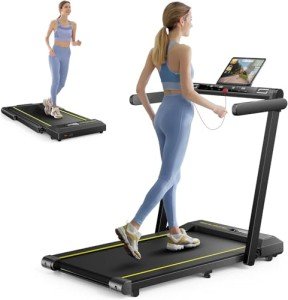10 Websites To Help You To Become An Expert In Non Electric Running Machine

The Rise of Non-Electric Running Machines: A Sustainable Approach to Home Fitness
Recently, the physical fitness industry has actually seen a substantial shift towards sustainable and energy-efficient equipment. Amongst the huge selection of choices, non-electric running makers have actually carved out a niche for themselves, appealing to fitness lovers who value eco-friendliness, functionality, and cost-effectiveness. hometreadmills.uk out the advantages of non-electric running machines, compares them with their electric equivalents, and responses regularly asked concerns about these ingenious fitness tools.
What is a Non-Electric Running Machine?
A non-electric running machine, often described as a manual treadmill, is a piece of exercise devices that allows users to walk or run without the requirement for electricity. Rather of relying on a motor, these makers use the user's own physical effort to move the running belt. This function not only makes them eco-friendly but likewise encourages a more natural and engaging workout experience.
Secret Features of Non-Electric Running Machines
| Function | Description |
|---|---|
| Self-Powered | Operates without electricity; users power the treadmill through their movements. |
| Adjustable Incline | The majority of models offer incline settings to improve exercise strength. |
| Compact Design | Usually lighter and more space-efficient than electric treadmills. |
| Low Maintenance | Fewer electronic components indicates simpler upkeep and durability. |
| Sturdiness | Built with robust materials to endure intense usage; typically more rugged than electric models. |
Benefits of Non-Electric Running Machines
1. Eco-Friendly
Being self-powered, non-electric running devices do not add to carbon emissions or energy consumption. For environmentally conscious consumers, this element aligns with a way of life that focuses on sustainability.
2. Affordable
Without the requirement for electricity, users can save money in the long run, both in regards to energy expenses and the cost of upkeep. The lack of complicated electronic devices indicates less likelihood of breakdown, potentially saving money on repair work.
3. Engagement and Intensity
Due to the manual nature of operation, users engage more muscles throughout the exercise. This can result in a more extreme cardiovascular workout, as the effort is entirely determined by the user's pace and force.
4. Flexibility
Non-electric running machines appropriate for numerous exercises, from light running to high-intensity period training (HIIT). Additionally, numerous designs allow users to change the incline, which can help target various muscle groups and boost exercise effectiveness.
5. Noise-Free Operation
Unlike electric treadmills that may have motors running, non-electric makers operate silently, making them best for home use where sound might be a concern.
Comparison: Non-Electric vs. Electric Running Machines
To offer a clearer understanding, the table listed below compares the main functions of non-electric and electric running devices:
| Feature | Non-Electric Running Machines | Electric Running Machines |
|---|---|---|
| Power Source | Manual (user-powered) | Electric (motor-driven) |
| Noise Level | Peaceful | Can be loud due to the motor |
| Space Requirement | Frequently more compact | Can be bulkier due to the motor |
| User Control | Overall control over pace and intensity | Speed and incline settings changed electronically |
| Maintenance | Low, primarily mechanical checks | Higher, due to electrical components |
| Preliminary Cost | Typically lower | Generally higher price point |
Picking the Right Non-Electric Running Machine
When choosing a non-electric running machine, potential buyers must think about a number of factors:
Key Considerations
- Material Quality: Look for devices developed with resilient components that can stand up to regular usage.
- Weight Capacity: Check the weight limits to guarantee it can accommodate all desired users.
- Adjustable Features: Opt for models that offer adjustable inclines and other customizable settings to enhance workout range.
- Footprint Size: Ensure the machine fits easily in your designated exercise location.
- User Reviews: Research feedback from other purchasers to determine reliability and performance.
Popular Non-Electric Running Machines
Here are some well-regarded non-electric running makers readily available in the market:
- AssaultFitness AirRunner: Known for its tough construct and versatility for different exercises.
- TrueForm Runner: Offers a distinct curved style for a more natural running experience.
- Woodway 4Front: High on resilience and features a distinct slat belt for smooth operation.
- XGear Fitness Manual Treadmill: Budget-friendly with adjustable incline options.
- Sunny Health & & Fitness Manual Treadmill: Compact and simple to use for newbies.
FAQs About Non-Electric Running Machines
Q1: Are non-electric running devices ideal for novices?
A1: Yes, non-electric running machines can be suitable for novices. Users can manage their speed quickly and gradually increase their strength as their fitness levels enhance.
Q2: How do I keep a non-electric running machine?
A2: Maintenance generally includes checking belt stress, lubing the moving parts, and guaranteeing that all elements are protected. This is usually less requiring than maintaining electric treadmills.
Q3: Can I perform high-intensity workouts on a non-electric running machine?
A3: Absolutely! Non-electric machines are ideal for high-intensity exercises, as they rely exclusively on the user's effort, which can quickly be ramped up.
Q4: Are non-electric running makers suitable for all physique?
A4: Most non-electric running makers can accommodate a variety of physique, however it's essential to examine the specific weight limitation and dimensions of each model.
Q5: Do non-electric running devices need any setup?
A5: Most non-electric running machines need very little setup, and some may be all set to utilize right out of package.
Non-electric running machines use an engaging alternative to traditional electric treadmills, marrying sustainability with effective workout options. As physical fitness enthusiasts become more conscious of their ecological effect, these devices are most likely to increase in popularity. With their myriad advantages and differed alternatives, non-electric running devices can perfectly suit a health-oriented lifestyle, making them a worthwhile consideration for anyone seeking to enhance their physical fitness journey.

